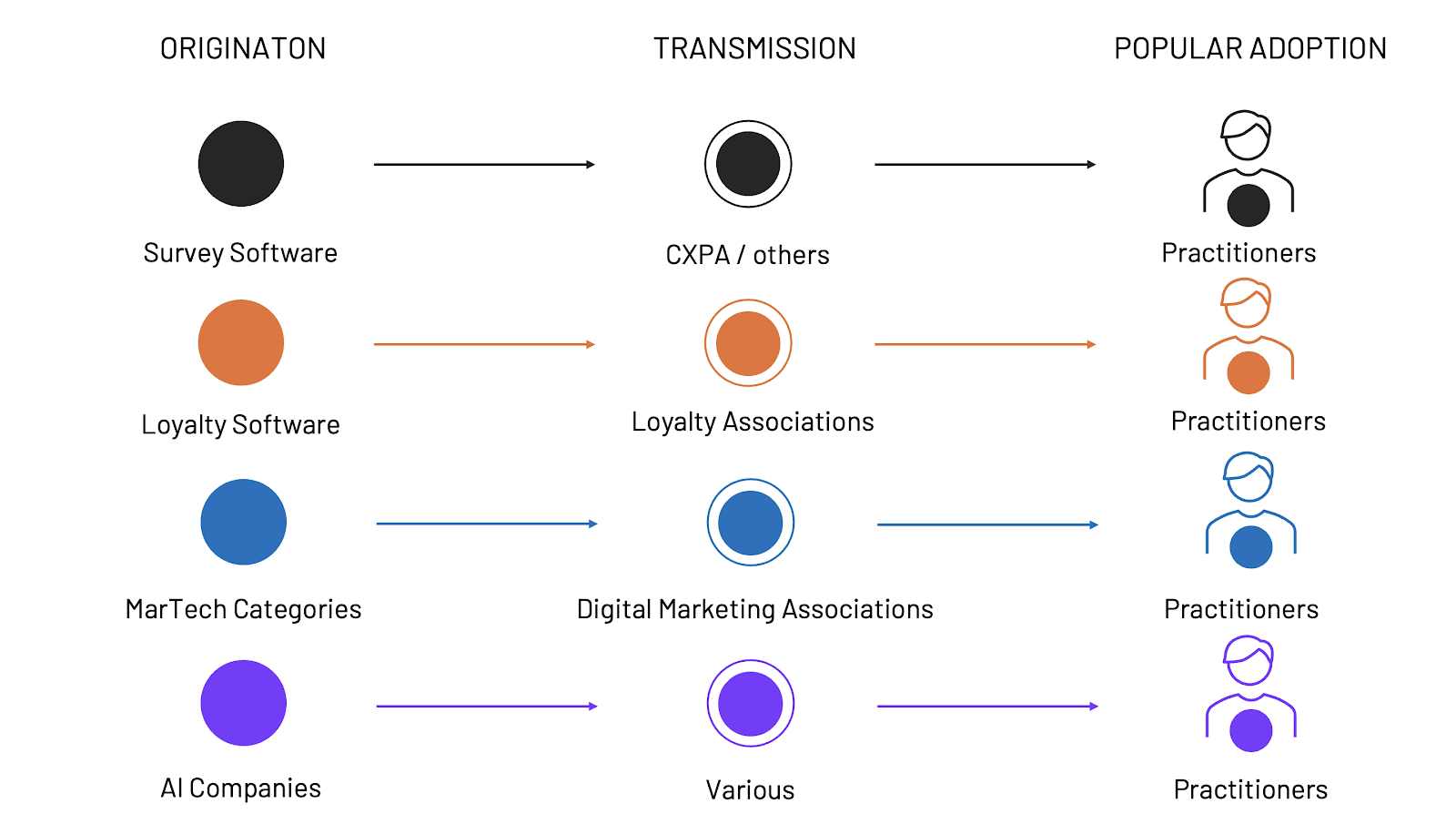
The Nature(s) of an Industrial Complex upon the Management of the Corporate Customer Base
One of the most exciting dynamics in marketing and customer leadership is emergent technology. One of most damaging dynamics in marketing and customer leadership is emergent technology.
These two statements are not the juxta position that you might regard them to be. One of characteristics of industries and professions that thrive in the post digital era, is their ability to harness frontier technology in service of their domain mastery. By contrast, lesser industries and professions are overcome by the technology itself. The former, are well educated professions and industrial disciplines. These are protected from technological populism by their standards, disciplinary language, educational infrastructure and usually, by a barrier to entry.
The latter, are those with less mastery among its population, usually in occupations that don’t enjoy the protections of more industrial professions. This is typical for much of the customer management (customering) field and invites an industrial complex, whereby technology, in the main, together and the many participants in the technology dominated eco-system, impose narratives and concepts.
Many are unsupported on the evidence and often damaging in practice.

A technological industrial complex is largely a characterised by cultural signs. Principally, it manifests in the need for specialised labour (perceived or real), where ‘unique’ skills are disproportionately valued. These underpin a shared sense of identity. Technology relevant to the domain, is integrated into daily working life, language, and social tribes. Thereafter, an ‘informal knowledge’ emerges, along with specific associated skills – with or without merit – which become central to the shared identity among those in the field, creating an exclusive socio-cultural dynamic.
This can lead to ‘symbolic values’, whereby emphasis is applied to new technology-based belief systems and disseminated as cultural narratives, at the expense of formal education and foundational, established knowledge. This results in technology being applied to a field, by those without critical knowledge of it, inverting traditional hierarchies and creating a version of Robert Solow’s productivity paradox.
“Where more technology is applied, the real productivity of workers goes down, instead of up”
This occurs, mostly, in fields where there is significant incentive for groups to influence the balance of an industry, and where the absence of those more rigorous industrial protections, means that there is little to regulate their self-interest.
Examples in the Customer Domain
There are a several types of influence in this wider industrial complex that we observe, negatively affecting the careers of people who associate as marketers, CXers, contact centre leaders, and retail executives.
We note three types of industrial complex in action:
Systemic - all of category, cultural dynamics
Multi-party - Vested interests conspire in campaigns of influence
Direct - A single source of unnatural influence
Explanation:
- The ‘systemic’ element is where belief systems, and artificial ideas of “best practice”, have taken root in a field. This is a result of quite organic dynamics, occurring as a new ‘category of work’, forms quickly and is often a biproduct of rapid technological expansion.
- By contrast, the ‘multi-party’ scenario is where several vested interests, combine to promote an idea that they directly benefit from, leveraging an existing level of industry influence.
- And lastly, the ‘direct’ element, considers the overt and unnatural influence of a single entity upon a field.
While each is a variant, they are bound by a common theme: the promotion of ideas or practices that are counter to the literature of the given field. Thereafter, they may benefit the few over the many. These ideas are invariably unscientific, uneconomic, or both. They rely on populism, the direct opposite of a sober application of evidence.
Readers should note that these are rarely an act of deliberate or illicit deceit. Instead, their perpetrators are often victim to their own ideas, but ultimately, all these variants damage the profitability of each business that is affected by them.
As we see in Figure 1.1, it is the absence of foundation critical theory in the hands of the practitioners, that demotes them to mere ‘adopter’, instead of educated professional. Leadership is ceded to manufacturers.

CONCLUSION
There is no proxy for proper training and an expert grasp of the fundamentals: science, economics, evidentiary precent. Importantly, this provides protection against undue influences, and the various forms of the technological industrial complex that threaten all occupations without that solid foundation.
All influences of this nature are negative upon business. Many morphs into one another, resulting in more systemic characteristics or industry-cultural belief systems, that can transcend the source of the original influence.
Technology is not the Enemy
It is also noteworthy, that graduates of Field Bell Institute are likely to be heavy users of technology, in part because of our programs. It is not our contention that technology itself is negative, but rather, that its application to any field which is not properly understood (by those applying it) will generate negative results.
We challenge the idea that ‘knowledge’ of the technology itself is a proxy for knowledge of the underlying domain (the customer base). We advocate for the opposite, mirroring more appropriate industrial and professional norms.

This should apply equally in marketing, customer management and then, naturally, in the informed use of technology. This informs the curriculum of both Mini MBA programs, and their relationship to each other.
Join the next course and start learning
April 2026





